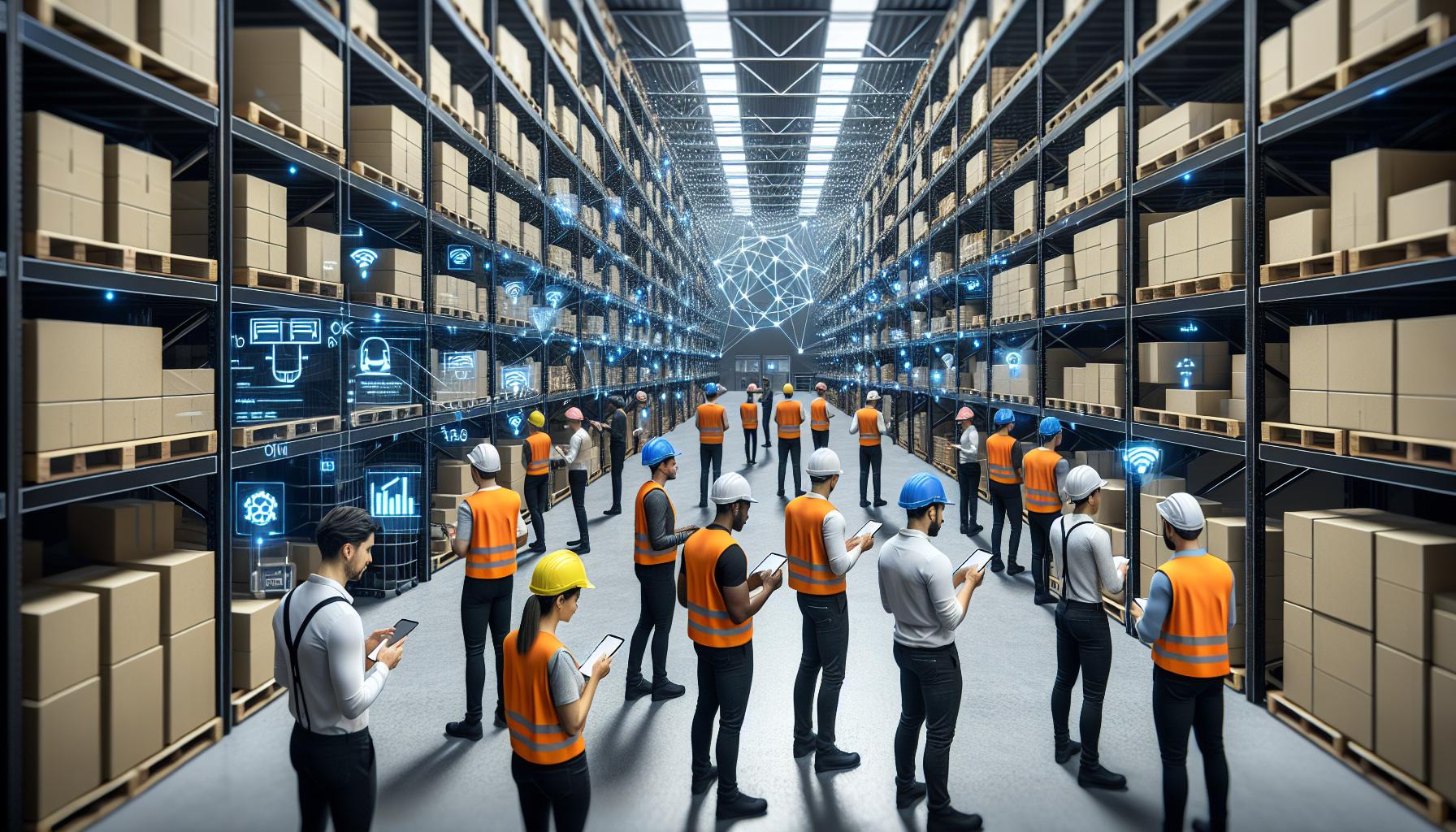In a world where everything’s getting smarter—think of your fridge that knows when you’re out of milk—it’s time to talk about the Internet of Things (IoT) and its game-changing role in the supply chain. Imagine a supply chain that runs smoother than a well-oiled machine, with sensors and devices chatting away like old friends at a coffee shop. That’s the future, and it’s not just a tech fantasy; it’s happening right now.
Overview of IoT in the Supply Chain
IoT transforms the supply chain by enhancing visibility and communication. Smart devices track inventory and monitor conditions throughout transportation. Sensors attached to pallets and containers collect data in real-time, providing actionable insights. Businesses can optimize routes and reduce waste through predictive analytics.
Data integration from various IoT devices creates a streamlined information flow. Manufacturers and retailers benefit from real-time updates on stock levels. This transparency leads to improved demand forecasting and inventory management. Employees equipped with mobile devices can access detailed information, facilitating informed decision-making.
Collaboration increases as stakeholders share IoT-generated data across platforms. Suppliers maintain better relationships with manufacturers through accurate tracking. Customers receive timely updates on shipment status, improving satisfaction.
Automation arises from IoT’s capabilities, minimizing human error in order processing. Automated systems can reorder low inventory levels based on real-time analytics. Efficiency improves when quality control measures are consistently monitored through connected devices.
Environmental impacts also receive attention through IoT applications. The technology aids in tracking energy consumption and reducing emissions in logistics processes. Supply chains adopt more sustainable practices, aligning with broader corporate social responsibility goals.
Future innovations are anticipated, including advancements in artificial intelligence integration with IoT. These developments will further enhance predictive capabilities. The supply chain evolves into an intelligent ecosystem that responds dynamically to market fluctuations.
What is the Future of Iot in the Supply Chain

The implementation of IoT technology continues to redefine supply chain operations. Companies increasingly adopt smart devices and sensors to enhance real-time data collection and streamline processes.
Benefits of IoT Technology
IoT technology delivers significant advantages for supply chains. Enhanced visibility into inventory levels allows businesses to optimize stock management. Real-time data accessibility improves demand forecasting, leading to reduced waste and more efficient production schedules. Automated systems enable timely reordering, minimizing stockouts and shortages. Additionally, IoT facilitates better communication between suppliers and manufacturers. Sharing insights through IoT-generated data strengthens partnerships, resulting in improved customer satisfaction. Sustainability also improves as IoT helps track energy consumption and reduce emissions, affirming corporate social responsibility commitments.
Challenges Faced by Businesses
Despite its benefits, implementing IoT technologies poses challenges for businesses. High initial costs associated with deploying IoT infrastructure limit entry for some organizations. Data security concerns arise as sensitive information may be vulnerable to breaches. Integration with existing systems can become complex, creating compatibility issues that hinder seamless operations. Training staff to utilize new technologies effectively stands as another critical hurdle. Resistance to change from employees may also impede progress. Addressing these challenges requires strategic planning and investment to harness IoT features while ensuring operational integrity.
Predictions for the Future of IoT in the Supply Chain

The future of IoT in the supply chain promises significant advancements. Continuous improvements in IoT technologies are expected to revolutionize operational capabilities.
Advancements in IoT Technologies
Devices featuring enhanced sensor technologies will lead to increased data accuracy. Artificial intelligence integration will empower predictive analytics, enabling real-time decision-making. Companies will witness the growth of edge computing, which reduces latency by processing data closer to its source. Moreover, interoperability between various IoT platforms will enhance data sharing among stakeholders. As these innovations emerge, supply chain participants will respond faster to changes in demand and potential disruptions. Robust cybersecurity protocols will be essential to protect sensitive data as IoT adoption expands.
Impact on Supply Chain Management
IoT will redefine the landscape of supply chain management through improved efficiency and visibility. Increased transparency will allow stakeholders to monitor processes in real-time and make informed decisions. Enhanced analytics provided by IoT will deliver actionable insights, improving demand forecasting and inventory control. Additionally, automation driven by IoT will streamline workflows, minimizing human error in order processing. By fostering collaboration among suppliers, manufacturers, and retailers, companies can enhance customer satisfaction through timely and accurate deliveries. The cumulative effect of these impacts will lead to a more dynamic and responsive supply chain.
Case Studies and Success Stories

Several companies exemplify the transformative impact of IoT in supply chain management.
Maersk: The shipping giant utilizes IoT technology to enhance container tracking. Sensors installed in containers monitor conditions such as temperature and humidity, providing real-time data. This practice leads to proactive management of perishable goods, reducing spoilage rates by 20%.
Walmart: The retail leader implements IoT devices for inventory management across its stores. These devices automate stock counts, resulting in significant improvements in stock accuracy, reaching 98%. Timely restocking of shelves enhances customer satisfaction.
Nestlé: The food and beverage company leverages IoT for supply chain visibility. Connected equipment provides data to optimize production processes and reduce waste. By incorporating IoT solutions, Nestlé cut production costs by 10%, demonstrating significant financial benefits.
Siemens: Siemens utilizes IoT in its logistics and manufacturing sectors to streamline operations. Real-time tracking of components minimizes delays and optimizes workflow. This implementation has led to a 15% reduction in delivery lead times, enhancing overall efficiency.
Honeywell: Honeywell employs IoT-driven analytics in its supply chain to enhance predictive maintenance. Sensors provide data on equipment health, allowing for timely interventions and reducing downtime. As a result, equipment failure rates decreased by 30%, maintaining continuous operations.
These case studies highlight the extensive applications of IoT in the supply chain, showcasing improved efficiency, reduced costs, and enhanced customer satisfaction. Effects seen in these examples pave the way for broader adoption of IoT technologies, indicating its pivotal role in transforming supply chain strategies.
Conclusion
The future of IoT in the supply chain promises a profound transformation. As technology evolves it will enable more efficient operations and foster deeper collaboration among stakeholders. Companies that embrace IoT innovations will likely enhance visibility and responsiveness while optimizing inventory management.
By leveraging real-time data and advanced analytics organizations can anticipate market changes and improve customer satisfaction. The integration of AI and edge computing will further refine predictive capabilities allowing businesses to adapt swiftly to disruptions.
While challenges remain addressing them through strategic planning and investment will unlock the full potential of IoT. As these advancements take shape the supply chain will become an increasingly intelligent and dynamic ecosystem.



